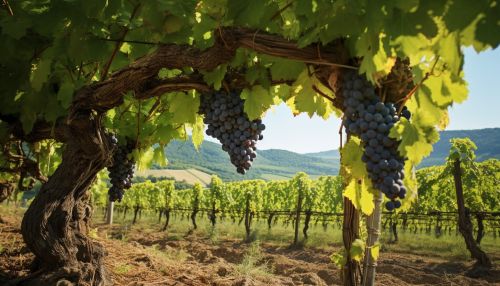History of wine
Origins
The history of wine begins with the domestication of the wild grapevine, Vitis vinifera, in the Near East, which likely took place around 6000 BC during the Neolithic period. Archaeological evidence suggests that the earliest known production of wine, made by fermenting grapes, occurred in what is now Georgia around 6000 BC. Other early archaeological evidence of wine production has been found in Iran, dating to about 5000 BC.


Ancient History
The Ancient Egyptians were known to have a great appreciation for wine, which was often used for ceremonial purposes. Wine was also common in ancient Greece and Rome, where it was considered a staple of the diet and an important part of their religious rituals.
In Ancient Rome, wine was a major part of the economy. The Romans were known for their sophisticated viticulture techniques, including the cultivation of specific grape varieties for specific types of wine, and the use of wine presses. The Romans also developed the barrel, a significant innovation in wine storage and transportation.
Middle Ages
During the Middle Ages, wine was a common part of the daily diet in many parts of Europe, particularly in monastic communities. Monks in France and Italy were known for their winemaking skills, and many of the techniques and grape varieties they used are still in use today.
In the Middle Ages, wine was also used as a form of currency, and it played a crucial role in international trade. The wine trade was particularly important in the Mediterranean region, where cities like Venice and Genoa became major centers of the wine trade.
Modern Era
In the modern era, the production and consumption of wine has become a global phenomenon. The 19th century saw the spread of viticulture to new regions such as Australia and the Americas, and the development of new technologies and techniques in winemaking.
The 20th century brought further innovations, including the use of stainless steel fermentation tanks and the development of controlled fermentation techniques. The late 20th and early 21st centuries have seen a growing interest in organic and biodynamic winemaking, and a resurgence of interest in traditional winemaking techniques.
Wine Production
Wine production involves a series of steps, including the cultivation of grapes, the fermentation of grape juice, the aging of the wine, and finally, bottling. The process can vary significantly depending on the type of wine being produced and the specific techniques used by the winemaker.


Wine Styles
There are many different styles of wine, including red, white, rosé, sparkling, and fortified wines. Each style has its own unique characteristics, and the production process can vary significantly depending on the style of wine being produced.
Wine Regions
There are many wine-producing regions around the world, each with its own unique climate, soil, and grape varieties. Some of the most famous wine regions include Bordeaux and Burgundy in France, Tuscany in Italy, and Napa Valley in California.
Wine and Culture
Wine has played a significant role in human culture for thousands of years. It has been used in religious rituals, as a form of currency, and as a symbol of status and wealth. Today, wine is often associated with fine dining and social gatherings, and it continues to be an important part of many cultural traditions.
